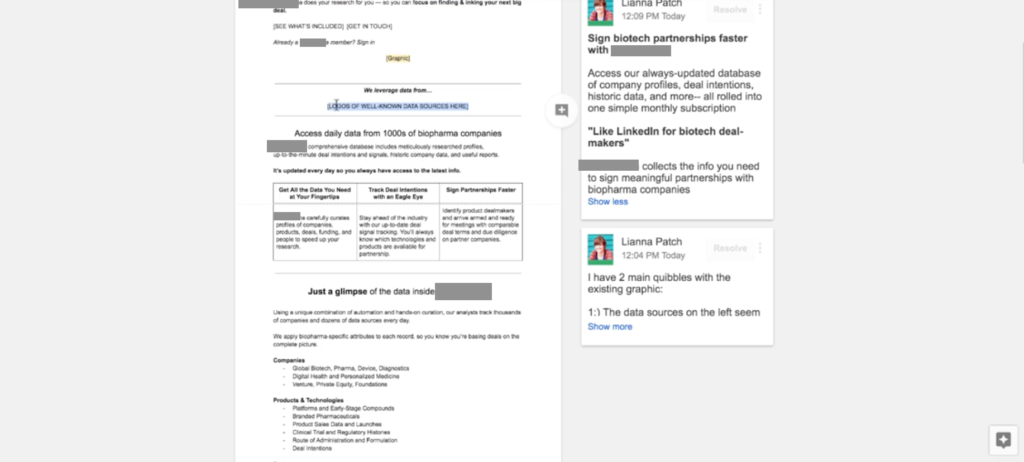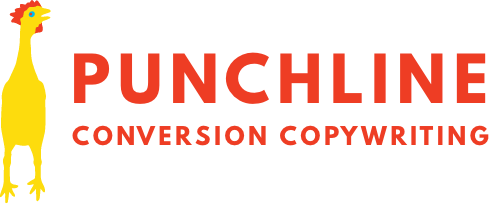Hello and welcome back to the latest edition of Steal All My Secrets (I’m Literally Banking on the Fact That You Won’t)!

Ohhhhh shit
Today, I’m gonna show you exactly how I perform the black-magic combination of rewriting and editing that I call an Uppercut.
What’s an Uppercut?
Uppercuts are my most popular productized service.
They’re custom-written improvements to existing landing or sales pages that need some love — both on the overall optimization side (think structure, layout, and design) and on the copy side (think tone, messaging, and personality).
They’ve been called “copy wizardry” by happy clients, and “black magic fuckery” by impressed/jealous copywriting peers.
Here’s what my most recent Uppercut client had to say:
Hi L, great job — the more I read it the more I like it! Def got my money’s worth. I really did get a lot of value from this. Specifically, it is a solid balance between humor and professionalism, nice job of cutting the fluff, loved a lot of the rewording as it helped clarity.”
Steal my process! Here’s how I do Uppercuts
Step 1: Structure
The very very first thing I do when starting an Uppercut is enjoy a 15-minute roll on a bed of crisp 100-dollar bills, cackling to myself.

“They paid me! I’m a real boy now!” I crow to my mother, who is confused about how I turned out this way
The next first thing I do is look at the structure of the page.
I ask:
- Does the page meet prospects where they are, and speak to their exact stage of awareness?
- Are the messages on the page in a logical order? Do they mirror the progression of thoughts the reader is likely to have?
If the answer to any of those questions is “Lol nah,” the structure needs fixing.
At this stage, I’m doing quick-and-dirty restructuring — cutting and pasting messages where they need to be, and adding placeholder headlines and subheaders. Like so:

If this is too meta to follow, I am very sorry and I did it on purpose.
HOT TIP: If you’re using both headers and subheaders, you’ve probably accidentally hidden the REAL benefits in the subheader. Try swapping them.
Once I’ve got the basic section structure down, I apply the same process to the body copy.
Because people write how they think — and we frequently forget things and remember them later— there tends to be also be some disorganization and repetition in the body copy.
Like I do with sections, I’ll cut body sentences and paste them where they need to be to improve the logical flow of the copy.
Then, I insert placeholders and/or highlight spots where I know I’ll need more information or transitions between sections. Voila:

You’re getting a sneak peek at a blog I haven’t finished yet! Lucky you.
Sometimes, people overlook structure in favor of focusing just on smaller line edits. That’s a mistake. Restructuring can help you take advantage of HUGE opportunities to clarify your offer.
Here’s what another client had to say after she saw the radical restructuring I did to her page:
Lianna,
Oh my. You slayed right through the copy and it looks so different but still using the copy and adding your tweaks to it. I had to noodle it over for a day. The first day, I was in shock (in a good way). The second day when I read over it I understood what you did with the structure. Soooooo, a BIG “THANK YOU” for your feedback and your help with restructuring the copy!
Step 2: Hone Messaging + Fill Holes with Swiped Copy
Once I’ve got the structure of the page all fixed up, it’s time to make sure the copy matches what the prospect is thinking.
Before I start working, I ask my fabulous clients to share me on any qualitative customer research they’ve got — things like survey responses, interview answers, customer service logs, etc.
These sources are a G-D goldmine of insight into the words that prospects need to read in order to identify and trust the copy.
Plus, they’re chock-full of descriptive, “sticky” phrases that can go straight into the copy verbatim.
For example,from research for a mattress manufacturer:
“After a year of playing Goldilocks and trying out beds at every mattress store in the Salt Lake Valley we stumbled on [CLIENT NAME]…”
And from research for a veterinary pharmacy:
“I wish you guys were my primary care and not just for my dogs ☺”
^^^^ These tasty morsels are pre-written copy.
Insert them into the spaces you’ve left open to assuage fears, explain specific benefits, and persuade prospects.
Step 3: Punch That Sh** Up
This is the fun part! After the restructuring and message-honing, it’s time to make the page copy stand out from competitors.

There are many ways to stand out from the crowd. Laser eyes are two of those ways
I punch up copy in two ways: by making sure it has its own voice, and by adding humor where appropriate.
First, give the copy its own voice
“I hate to admit it, Lianna,” you say, glancing furtively around the coffee shop. “The truth is that ‘voice’ is one of those things I always reference, but I couldn’t really define it even if you held a NERF gun to my head.”
I’ll save my darts for the next guy, ‘cause I got you, fam!
In her excellent guide on writing voice, Abbey Woodcock defines voice as made up of three parts:
– Tone — The copy’s emotional background or inflection, AKA where the copy is coming from. Tone can be excited, gloomy, sarcastic, angry, you name it.
– Cadence — The rhythm created by the copy’s sentence length and variety
– Vocabulary — The words your copy uses to convey meaning
So, when I’m punching up copy line by line, I’m essentially:
– Matching the copy’s emotion and inflection to the way the client wants to come off, and/or the way they’d like the reader to feel
– Varying sentence length so the copy doesn’t feel endlessly monotonous or — on the other end of the spectrum — choppy and interrupted
– Using casual and accessible language wherever possible, so the copy is easy to read
Then, add humor where it matters
As you might expect from a company named “Punchline,” I’ve got a loooot to say on the topic of humor.
One face-palmingly easy way to inject your page with humor? Add a GIF. Here’s how to identify where you should use GIFs, and how to pick the right one.
If you want to know even more about being funny on paper, read this: 10 Easy-As-Pie Punchups for Warmer, Funnier, More Personable Copy.
Finally, I explain with a video walkthrough
I rarely send *just* a GoogleDoc to clients, even if I’ve worked with them before.
Instead, I’ll make a 5-10 minute video walkthrough to explain how and why I’ve reworked the page. THEN, I’ll link ‘em to the GoogleDoc — so they’ve always got context for changes that might not be immediately intuitive at first glance.
Nope, my face is not featured in the videos. Which is fine, because by this point it’s wan, puffy, and haggard, like the GOP.

Actual still from an Uppercut delivery video, with client name obscured because I am an international spy
Clients love not having to figure things out for themselves. Here’s what the client above said:
“I just watched the video and quickly scrolled through the notes. I’m definitely going to start implementing these starting this afternoon. Great idea with the video response. Thanks for that.”
Congrats! Now you know all my secrets and you don’t have to pay me. Wait… what did I just do??
As for me, after a long day doing Uppercuts for all sorts of businesses, from motivational speakers to sugar-dating profile writers, it’s time to slink back to my bed of Ben Franklins (which is much less comfortable than a real mattress, but gratifying in other ways).
Are you gonna try my Uppercut process? Leave a comment and let me know how it works for you!







7 Comments
-

-

-

-

-

-

-
